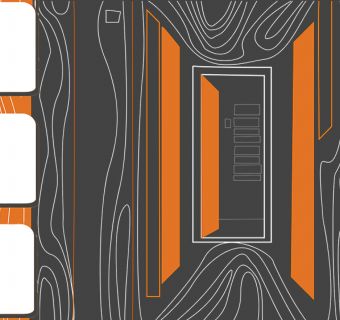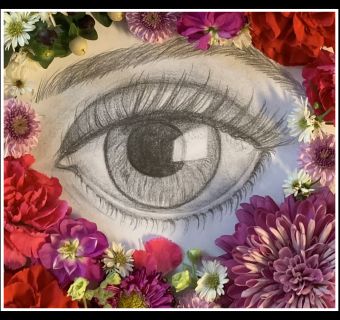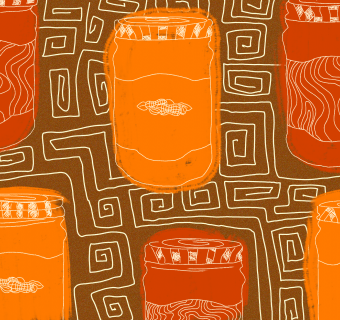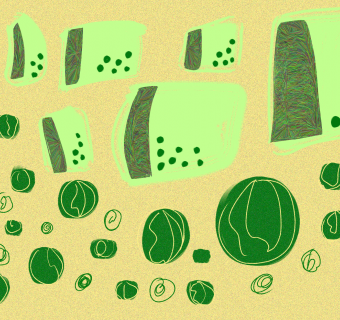About a year ago, I started on a journey towards building a sustainable wardrobe. I wrote a final paper for my feminist theory class on how fast fashion retailers (specifically Zara) target the “neoliberal female subject.” I felt like these clothing companies were way too prevalent in my brain, and I needed some distance from the cycle. Sometimes, that distance means shopping at sustainable brands instead of fast fashion alternatives. It can also mean buying items secondhand and putting in a little work to find the clothing I like. A lot of times, it just means buying less and wearing what I already own instead.
No one is going to be perfect, especially when it comes to shopping sustainably. And not everyone is able to ditch fast fashion consumption completely. That’s totally okay. I have a lot of fast fashion pieces in my closet that I love and wear all the time. For me, the key is to make sure that I extend the life of a fast fashion piece beyond what the manufacturers want. Spending more money on a sustainable option can be a little gut-wrenching and hard on the wallet at first, but if you put in effort to value the item and follow all care directions, they can last way longer than a fast fashion piece. And, if you do end up donating the clothing item, there will still be life in it for someone else to find and wear.
I have issues with the sustainability movement for its lack of diversity in race and in body representations and in class accessibility. I understand that it’s not wholly available for everyone, and that it can feel like any action we take towards individual progress won’t affect the system of fast fashion or climate change as a whole. But still, I think it’s important to act and consume according to your values when possible. Any amount of change from this hyper-paced industry built to profit off of women’s insecurities and dollars is a step in the right direction, even if the step is a small one.
Everlane is a favorite website of mine for their radical transparency and commitment to basics done right. Their jeans are well-priced for a quality pair that will last a long time.
Patagonia is a great option for more utilitarian clothing options that are crazy comfortable. They are also committed to addressing climate change and preserving the environment. Plus, they have a “Worn Wear” section where you can buy used Patagonia items, which is a win-win.
I have been eyeing a pair of Veja sneakers for the longest time, and the second my current everyday white sneaker reaches retirement, I’m treating myself. They have a section on their website dedicated to their “project”, or the brand’s sourcing and vision. Veja also has vegan sneaker options. And yes, Meghan Markle wore them to the Invictus Games in Australia.
Reformation does a great job at producing high quality, sustainable clothes that are still very trendy and current. Yes, you’ll pay a pretty penny for it, but there is a huge market both for and of Reformation clothes on second-hand sites and apps. Still, some of their tops and jeans and even dresses are priced comparably to stores like Urban Outfitters or Free People.
Girlfriend Collective specializes in activewear, like leggings and sports bras, that are available in a ton of different colors, lengths, and sizes.
Another option for athletic wear, Outdoor Voices is a company that is committed to being eco-conscious. In my opinion, they could step up the transparency a notch with more easily accessible information surrounding their brand ethos. Nevertheless, their clothes are fun and great quality.
Asos Marketplace sells clothes from smaller, independent brands and vintage clothing as well. I like to select just the vintage boutiques to shop from, and then it feels like an online curated vintage store, which is perfect for when I don’t have time to go myself.
Pact focuses on organic cotton, and has so many basics, including sleepwear and underwear.
Mighty Good Undies is an Australian brand that sells, you guessed it, ethical underwear options.
Shop Depop, Etsy, Poshmark, Ebay, etc.
Resale websites and apps have provided a great platform for second-hand shopping over the past years. Before buying from a fast fashion website, or even from one of the more expensive sustainable stores, go search for a used version of the item. The other great side of these platforms is that they allow you to make some money off of clothing articles that are in good condition, but you don’t really wear anymore.
Goodwill or local thrift stores
There are so many positive aspects to thrifting yourself, which is why it’s my favorite choice when it comes to sustainable shopping. You are inherently bringing a new life to used clothes, you get to use your imagination outside of the fashion cycle, and the prices are inexpensive. Also, I think all of my thrifted clothes are so much more comfortable than my clothes purchased from a regular store. My biggest recommendations are to go in with an open but purposeful mindset, and don’t be afraid to rework the clothes to fit you through some cutting or sewing.
Also, for a little more money, you can go to vintage stores for a more curated experience. There are some great ones in Charlottesville, including Low and Ike’s Underground.
For information about sustainable shopping and the effects of fast fashion: The Fashion Revolution, The True Cost (available on Netflix), Buyerarchy of Needs, Good on You App.








